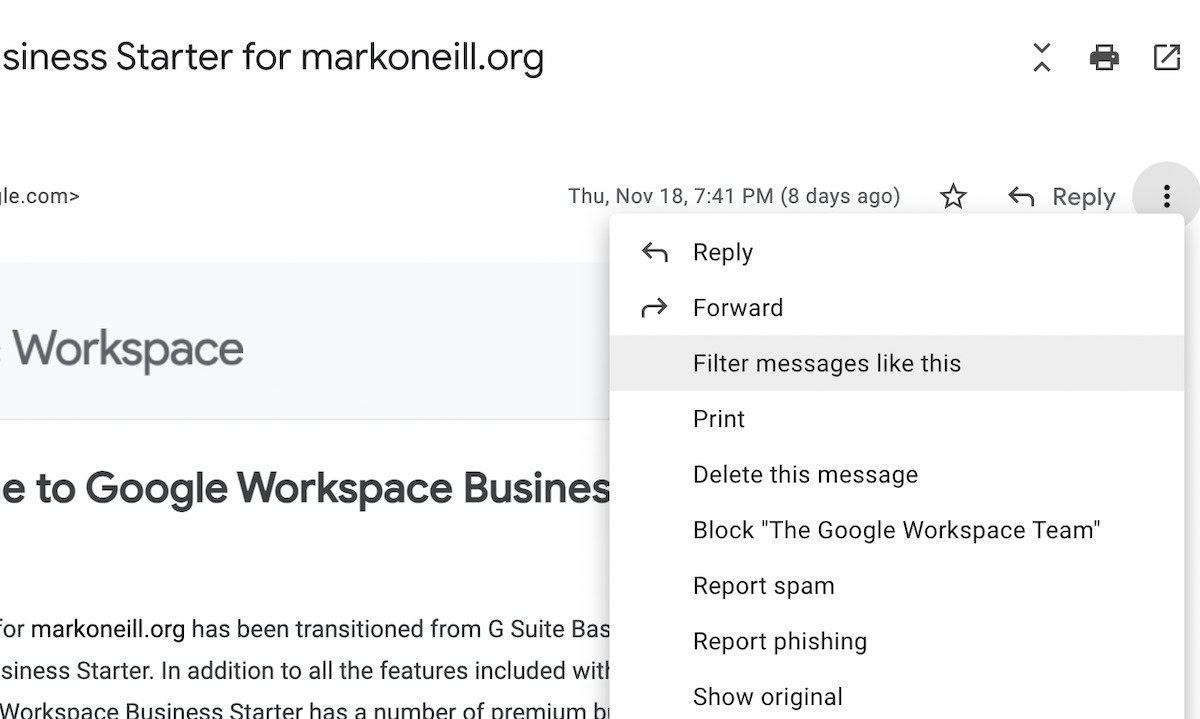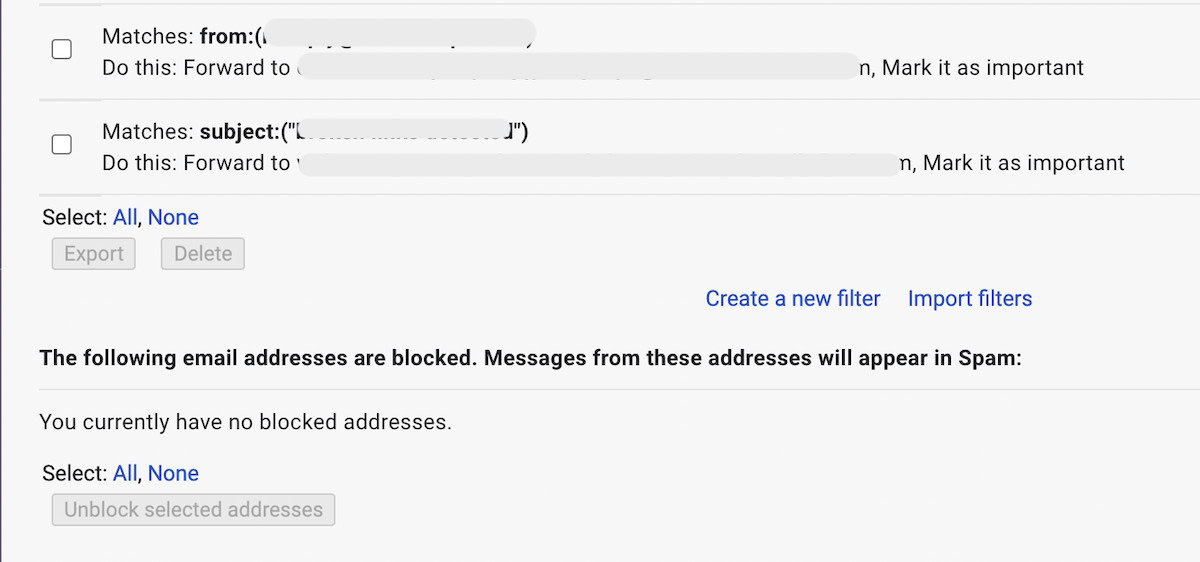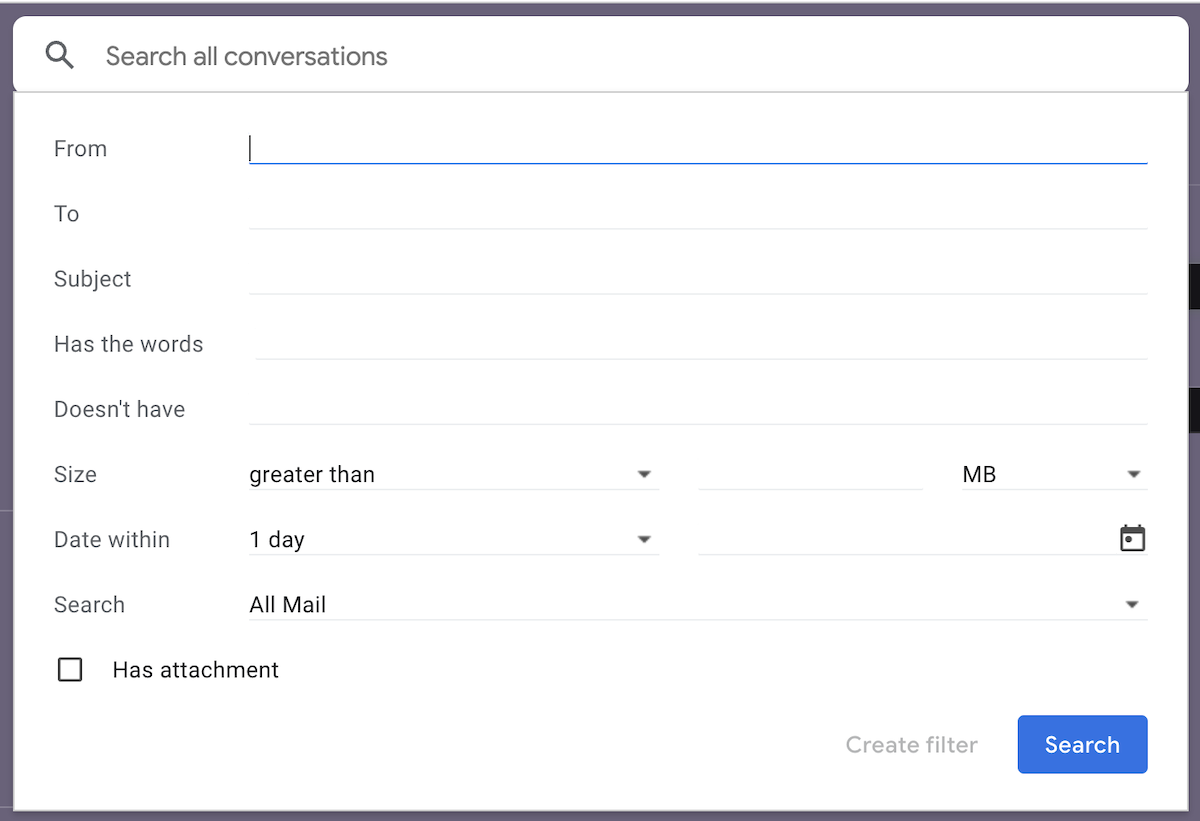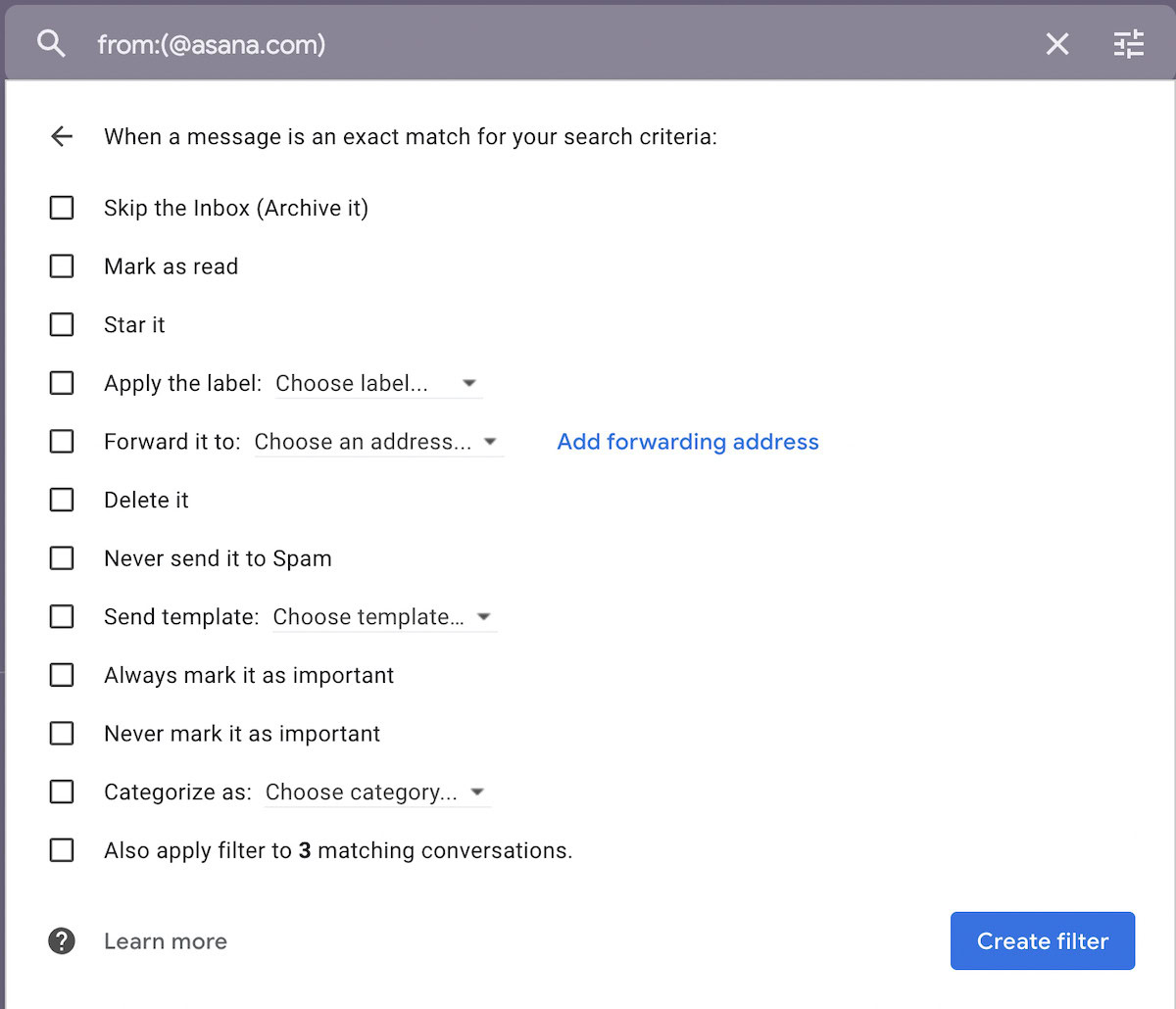Affiliate links on Android Authority may earn us a commission. Learn more.
How to create rules in Gmail to filter your emails
Published onAugust 24, 2022
If you want to be a productivity king, automation is the name of the game. In email, that means setting up filters, so when an email hits the inbox, it automatically goes where you want it to, and does what you tell it to. If you haven’t hopped on board the email automation train yet, let’s look at how to create rules in Gmail to filter your emails.
QUICK ANSWER
To filter your emails in Gmail, click the three jagged lines to the right of the Gmail search bar. When the advanced search box comes up, enter the details of the email you want to filter and click Create filter. Alternatively, open the email you want to filter and go to More—>Filter messages like these. This will also take you to the advanced search box with some pre-filled details.
Create a rule in Gmail to filter your emails
At the time of writing, you can only create Gmail filters on the desktop browser. Although filters work in the mobile app, you cannot create, maintain, or delete them there. For that, you need to use desktop Gmail.
With that caveat out of the way, let’s create a filter. There are three ways to start creating a filter.
Inside an existing email.

In the Filters and Blocked Addresses section of Gmail Settings.

And in the advanced search box, which can be accessed from the Gmail search bar. Just click the three jagged horizontal lines to the right.

Whichever one you choose will automatically redirect you to the advanced search box anyway. But these are a few ways to reach the same destination.
The advanced search criteria options
However you reach the box above, you now need to select which search criteria you will specify for that email. The more granular and exact you can get, the better the filter will work.
Most of them are pretty self-explanatory. However, here are two tips.
- Try to enclose phrases inside speech marks. So for the Subject field, “Monthly spreadsheets” would be better than without the speech marks. This increases the chance of the correct email activating the filter.
- Has the words and Doesn’t have includes words inside the body of the email, not just the Subject title. This is good for online stores that send out constant marketing emails with slightly different email addresses, making them difficult to mark as spam. Just put the company’s name in one of these fields, and the filter will scoop them all up. Looking at you, Amazon.
Once the search criteria have been specified, click Create filter.
Creating the filter
When you click Create filter, you’ll now be asked to specify what should happen to the email when one arrives that meets all of the specified criteria. Tick the boxes for all the ones you want — there’s no limit to how many you can choose. However, be careful that one option doesn’t conflict with another.

Please note that if you select Forward it to or Send template, you must make the forwarding address or template first. Otherwise, when you attempt to make them from this menu, you will be taken away to the appropriate Gmail section, and all your filter settings will be wiped.
This box also detects how many emails in your account already meet the specified criteria. This is shown at the bottom at Also apply filter to. You can then decide whether to apply the filter to those emails or only for future ones.
When you have chosen all of your options, click Create filter. Now go to Filters and Blocked Addresses, scroll down to the bottom of the filter list, and see if your new filter is there.
Read more: How to sort emails by sender, size, date, and unread in Gmail
FAQs
Yes, you can. If you have a set of filters you want to transfer to another Gmail account, you can export them out of the first account and import them into the other.
- Go to Filters and Blocked Addresses, scroll down to the bottom of the page, and click Select All. This will select every filter on the page.
- Click Export to download a mailFilters.xml file to your computer.
- Now go to your other Gmail account, go to Filters and Blocked Addresses, and click Import filters. Navigate to the XML file on your computer and upload it.
Gmail doesn’t offer a search function for filters. What you can do is go to the Filters page in Settings and use the CTRL+F keyboard combination (or CMD+F on macOS) to search the page for matches.
A wildcard is when you don’t specify part of the email address (for example), leaving Gmail with a rather broad brush to scoop up all emails relating to that domain. For example, instead of info@amazon.com, a wildcard would be *@amazon.com. So, in this case, the star indicates that you want all Amazon.com emails triggered by the filter, instead of only ones by info@amazon.com. However, bear in mind that wildcards can lead to too many emails falsely triggering the filter, as you’re not being specific enough.
No, Gmail filters are not case-sensitive. Whether they’re upper-case or lower-case makes no difference.